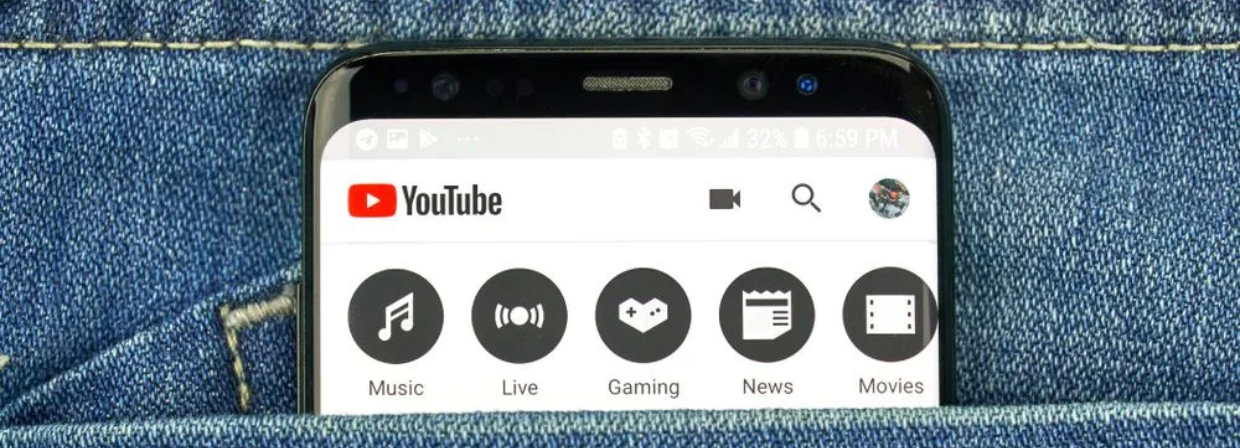How to Do Keyword Research for YouTube: Process, Tools, and Tips
Mastering YouTube keyword research is crucial for creators in the ever-changing world of online content. It helps increase video visibility and reach a larger audience.
Strategically chosen keywords on YouTube hold immense significance. This comprehensive guide is designed to walk you through a step-by-step process, introduce you to cutting-edge tools, and provide invaluable tips to empower your YouTube keyword research endeavors.
Whether you’re a seasoned content creator or just starting your journey, this guide will equip you with the knowledge and tools needed to navigate the ever-evolving world of YouTube and optimize your content for maximum discoverability.
Join us as we delve into the intricacies of YouTube keyword research, unlocking the secrets to propel your videos to new heights in the digital realm.
Step-by-Step Guide to YouTube Keyword Research:
- Grasp the essentials of YouTube SEO and its link to keywords.
- Understand your audience to streamline keyword research.
- Learn to navigate dominant YouTube keyword tools for research.
- Decrypt the magic of competitor keyword analysis.
- Curate your final keyword list with data-driven decisions.
Step 1: Understanding YouTube SEO
YouTube SEO isn’t some mystical sorcery; it refers to the process of optimizing your YouTube content to appear higher in search results. It’s the grease for your video content machine, making it easier for viewers to find, watch, and engage with your work.
Keywords perform a central role in YouTube SEO. Think of them as linguistic signposts that guide viewers to your video content. When users type relevant search queries, YouTube’s algorithm digs through an ocean of content to feed videos that tie back to these key terms.
Step 2: Identifying Your Target Audience
Knowing your audience isn’t just a cliché in business manuals; it’s the backbone of effective keyword research. By understanding who your viewers are, what interests them, and how they speak, you can adjust your keywords to match their search behavior.
Begin by demystifying your users’ demographics, viewing preferences, and feedback. You can leverage YouTube Analytics, surveys, and community suggestions to uncover this information. The goal is to reel in the perfect keywords that your audience is likely using in their YouTube search.
Step 3: Using YouTube Keyword Tools
Picture this: You’re in a kitchen with a myriad of ingredients for your SEO recipe. YouTube keyword tools help you pick the best ones for your dish. Services like YouTube’s autocomplete feature, Keyword Tool Dominator, and TubeBuddy offer a rich medley of keyword insights.
These tools are like your personal SEO lodestars. They not only generate keyword ideas based on your input but also reveal how often these terms are searched, their competitiveness, and current trends. Employing these resources in your research can strengthen your keyword strategy profoundly.
Step 4: Analyzing Competitor Keywords
Knowing your competition’s keyword game teaches two things: the tactics that work and the ones to avoid. A thorough competitor keyword analysis can spotlight opportunities for enhancing your content’s visibility on YouTube’s search engine.
To achieve this, focus on high-performing videos within your niche. Analyze their titles, descriptions, and tags for keyword inspiration. Then, using any of the discussed YouTube tool resources, fathom how these keywords are performing. The data acquired here will give you an inside look into what your audience is already viewing and enjoying.
Step 5: Finalizing Your Keyword List
After amassing a tailored list of keywords, the next step is to streamline them to form the core of your SEO efforts. At this stage, rely on relevancy and data to pick out the victors. Ready your keywords for the big match: target the ones that resonate best with your content and have a notable search volume.
As for the organization part, arrange your list by prioritizing keywords based on their performance statistics. This technique guarantees that your chosen keywords are not random, but researched, relevant, and likely to boost your content’s SEO power.
How to Optimize Your YouTube Videos Using Keywords
- Enhance video visibility through keyword-optimized titles
- Boost viewer engagement via keyword-rich video descriptions
- Improve video discoverability through the effective use of tags
The key to breaking through the noise on YouTube lies in your ability to optimize your videos using relevant keywords. This section delves into how you can incorporate keywords in your video titles, descriptions, and tags to improve your video’s visibility, reach, and engagement.
Incorporating Keywords in Video Titles
An effective YouTube strategy starts with an eye-catching, keyword-rich video title.
Importance of Keyword-Optimized Titles
To put it simply, titles play a critical role in YouTube search rankings. YouTube’s algorithm highly values relevance, and keyword-optimized titles are a direct indicator of your video’s relevance to a viewer’s query. The more relevant your video appears, the more likely it is to be seen and clicked on.
Tips on Writing Compelling, Keyword-Rich Titles
Remember, YouTube viewers are humans first and algorithms second. It’s important to appeal to both. First, front-load your title with your primary keyword. This not only catches the attention of viewers but makes it clear to the YouTube algorithm what your content is about. Try to cap your title within 60 characters, making sure it’s clear, concise, and click-worthy.
Using Keywords in Video Descriptions
After your title, your video’s description is the next big opportunity for optimization.
How to Effectively Use Keywords in Video Descriptions
A good rule of thumb is to include your keyword within the first 25 words, making sure it flows naturally within the sentence. Plus, sprinkle latent semantic indexing (LSI) keywords throughout your description. These LSI keywords are related terms or synonyms that provide context to your primary keyword and help YouTube understand your content better.
Importance of Providing Value in Descriptions
Beyond keywords, aim to provide value in your descriptions. Tell viewers why they should watch your video and what they will learn from it. Descriptions that deliver value often realize higher views and engagement rates.
Tagging Videos with Keywords
Lastly, the strategic use of tags is a crucial part of your YouTube SEO toolkit.
Importance of Tags in YouTube SEO
Tags help YouTube grasp the content and context of your video, contributing to your video’s discovery in search results. Despite their importance, tags alone won’t make or break your videos’ success–but when combined with a high-quality video, optimized title, and description, they can provide a significant boost.
Best Practices for Tagging YouTube Videos
Start with your most important keywords, then add a mix of LSI keywords and broad-match keywords that make sense for your video. Keep in mind, that quality over quantity is crucial when it comes to tags—avoid tag-stuffing at all costs. Tag relevance is more important than sheer volume.
By leveraging a strategic approach to keyword optimization that covers titles, descriptions, and tags, you’ll be a step closer to capturing the attention of both the YouTube algorithm and your target audience.
Understanding YouTube Ranking Factors
- YouTube’s algorithm ranks based on watch time, audience retention, user engagement, and channel authority.
- Improvements in these areas enhance video performance and visibility.
- Mastering these ranking factors offers a competitive edge in YouTube SEO.
Importance of Watch Time and Audience Retention
Watch time and audience retention are critical determinants in how YouTube’s algorithm ranks videos. Watch time refers to the total accumulated minutes people have spent watching your videos, while audience retention measures the average proportion of a video that viewers watched. In essence, the longer viewers stay tuned to your content, the better your videos will perform.
Improvements in Watch Time and Audience Retention Videos that keep viewers watching for longer periods signal to YouTube that your content is captivating and worth promoting. Here are a few tips to magnify your watch time and audience retention:
- Create compelling, high-value content: Content is king. Making sure your videos are valuable and engaging to your target audience is crucial.
- Use attractive thumbnails and impactful titles: This can significantly increase the click-through rate of your videos, thus, more views and prolonged watch time.
- Incorporate strong call-to-actions: Encourage viewers to like, share, and subscribe, which brings us to our next ranking factor.
Role of User Engagement in YouTube Ranking
The level of interaction your videos obtain also significantly influences YouTube’s algorithm. This includes likes, shares, and comments. A higher level of user engagement indicates that viewers find your content interesting, prompting the algorithm to promote your videos more extensively.
Boosting User Engagement Concentrating on boosting user engagement can benefit your YouTube ranking drastically. You can:
- Encourage viewers to like, comment, and share your videos: You could consider incorporating a brief reminder at the end of your videos.
- Respond to comments: Doing so can create a sense of community and encourage further engagement.
- Share your videos on other social media platforms: This ensures maximum exposure and increases chances of engaging more viewers.
Impact of Channel Authority on YouTube Ranking
Channel authority, the perceived level of your channel’s reputation, is another substantial factor in YouTube SEO. It’s based on various factors including the number of subscribers, total views, consistent uploads, and engagement rates. Establishing a high channel authority sends a direct signal to YouTube that your channel is reliable and proven to deliver quality content.
Improving Channel Authority Boosting your channel authority can boost your overall video ranking. Here are some strategies to lend a hand:
- Consistently upload high-quality videos: This could help amass a loyal subscriber base and drive regular traffic to your channel.
- Promote your YouTube channel on various platforms: By sharing your videos and talking about them on different platforms, you can quickly increase your channel’s audience base.
- Engage with your audience: Responding to comments and interacting with your viewers builds a stronger community around your channel, which in turn strengthens your channel authority.
Developing a YouTube Content Strategy Based on Keyword Research
- Leveraging keywords for content creation
- Arriving at a consistent posting schedule for SEO benefits
- Continually monitoring and tweaking the strategy for optimum results
Creating Content Around Your Keywords
Understanding YouTube ranking factors leads us to the next logical step, developing a content strategy around it. A crucial element of this strategy is your keywords. Content and keyword alignment are paramount to driving organic traffic to your YouTube channel.
The value of creating content that aligns with your keywords
Creating content that matches your targeted keywords gives your video a high chance of discovery by your desired audience. YouTube’s algorithm favors content that closely matches popular search queries, therefore, aligning your content with keywords increases its visibility.
Tips for brainstorming content ideas based on keywords
Use your identified keywords as inspiration. They signify what your target audience is searching for and show their engagement preferences. Tools to generate content ideas around your keywords include keyword suggestion tools, question banks, and competitors’ content.
Examining prevalent themes can stimulate more ideas, resulting in a vast pool of content options that resonate with your audience.
Consistency in Posting
Schedule is a keyword in the YouTube world. It can significantly influence your video rankings and overall channel performance.
Why regular posting for YouTube SEO matters
YouTube’s algorithm favors consistency. Regular posting conveys to the algorithm that your channel is active and reliable, thus enhancing your content’s exposure. Besides, frequent updates keep your audience engaged, encouraging them to revisit your channel for fresh content.
Tips on maintaining a consistent posting schedule
Adhering to a regular schedule can be challenging but achievable with planning. Pre-plan your content calendar, aiming to have a bank of videos ready to post. Using scheduling tools can take the strain off manual posting while ensuring timeliness.
Evaluating and Adjusting Your Strategy
The path to YouTube success is paved with analysis and iterations. Sticking to a stagnant strategy can stunt your channel growth.
The importance of tracking and analyzing your results
You cannot manage what you don’t measure. Frequent metric analysis exposes performance trends, offering insights into areas of improvement. The data paints a clear picture of what works and what doesn’t, providing a firm foundation for informed decisions.
How to adjust your strategy based on performance data
Data-driven decisions bring you closer to your goals. Analyzing metrics like viewer count, view duration, and likes allows for effective strategy adjustments. For instance, if videos on a particular topic garner more engagement, developing more content around it can lead to increased views and subscriptions.
Carving out a strategy based on keyword analysis sets strong groundwork for thriving YouTube content. Incorporating channels for content creation, maintaining consistency, and continuously evaluating for improvements can significantly aid in catapulting your YouTube channel to reach the desired ranking.
Mastering the Art of YouTube Keywords
Having dissected the process of YouTube keyword research, we’ve shone a light on essential tools and shared tips that point the way to SEO battlefield. Every step counts – from brainstorming keywords, competitor scrutiny, and bids for long-tail keywords, to staying updated with trends.
Why is that important? Because having the right keyword in your toolbox is like having the right key for the room full of potential clients. The insights here lead the way to transforming your YouTube SEO from guesswork into a well-oiled strategy – reducing wasted efforts and accelerating desired results.
Now you’ve got the know-how. Apply this knowledge with patience and persistence. Start by revisiting your past posts – can you spot any SEO opportunities you might have missed? Then, dive into the keyword ocean for your upcoming content, bearing your new-found wisdom.
Just thinking, how about starting with your most popular video? Which keyword strategy made that one a hit?
Remember, YouTube isn’t just about views. It’s about reaching the right viewer. So light it up – with detailed, targeted, and timely keywords.
Stay consistent and remember – SEO is the game, and keywords are your playing cards. Now, go play your winning hand.




